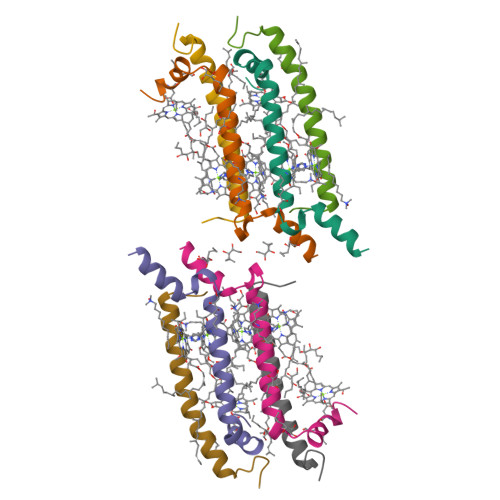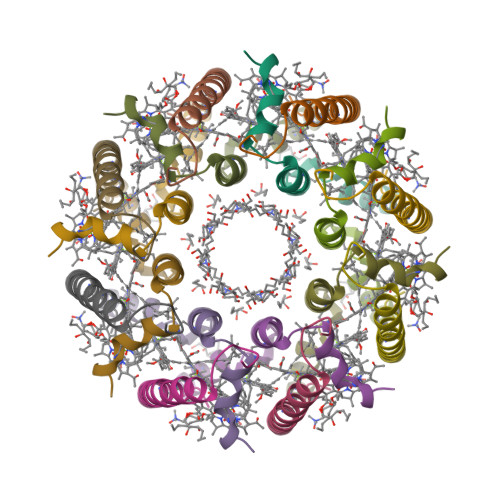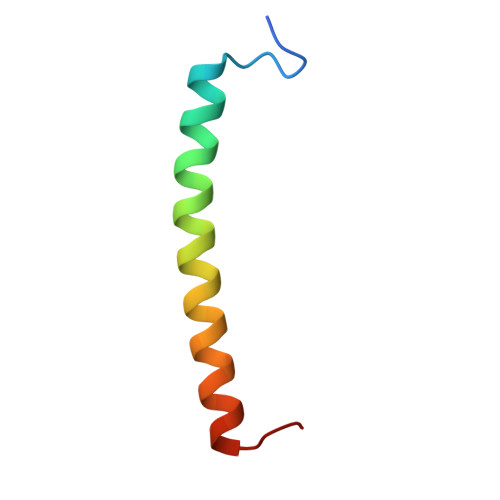The crystal structure of the light-harvesting complex II (B800-850) from Rhodospirillum molischianum.
Koepke, J., Hu, X., Muenke, C., Schulten, K., Michel, H.(1996) Structure 4: 581-597
- PubMed: 8736556
- DOI: https://doi.org/10.1016/s0969-2126(96)00063-9
- Primary Citation of Related Structures:
1LGH - PubMed Abstract:
The light-harvesting complexes II (LH-2s) are integral membrane proteins that form ring-like structures, oligomers of alpha beta-heterodimers, in the photosynthetic membranes of purple bacteria. They contain a large number of chromophores organized optimally for light absorption and rapid light energy migration. Recently, the structure of the nonameric LH-2 of Rhodopseudomonas acidophila has been determined; we report here the crystal structure of the octameric LH-2 from Rhodospirillum molischianum. The unveiling of similarities and differences in the architecture of these proteins may provide valuable insight into the efficient energy transfer mechanisms of bacterial photosynthesis. The crystal structure of LH-2 from Rs. molischianum has been determined by molecular replacement at 2.4 A resolution using X-ray diffraction. The crystal structure displays two concentric cylinders of sixteen membrane-spanning helical subunits, containing two rings of bacteriochlorophyll-a (BChl-a) molecules. One ring comprises sixteen B850 BChl-as perpendicular to the membrane plane and the other eight B800 BChl-as that are nearly parallel to the membrane plane; eight membrane-spanning lycopenes (the major carotenoid in this complex) stretch out between the B800 and B850 BChl-as. The B800 BChl-as exhibit a different ligation from that of Rps. acidophila (aspartate is the Mg ligand as opposed to formyl-methionine in Rps. acidophila). The light-harvesting complexes from different bacteria assume various ring sizes. In LH-2 of Rs. molischianum, the Qy transition dipole moments of neighbouring B850 and B800 BChl-as are nearly parallel to each other, that is, they are optimally aligned for Föster exciton transfer. Dexter energy transfer between these chlorophylls is also possible through interactions mediated by lycopenes and B850 BChl-a phytyl tails; the B800 BChl-a and one of the two B850 BChl-as associated with each heterodimeric unit are in van der Waals distance to a lycopene, such that singlet and triplet energy transfer between lycopene and the BChl-as can occur by the Dexter mechanism. The ring structure of the B850 BChl-as is optimal for light energy transfer in that it samples all spatial absorption and emission characteristics and places all oscillator strength into energetically low lying, thermally accessible exciton states.
Organizational Affiliation:
Max-Planck-Institut für Biochemie, Abteilung Molekulare Membranbiologie, Frankfurt, Germany.






















